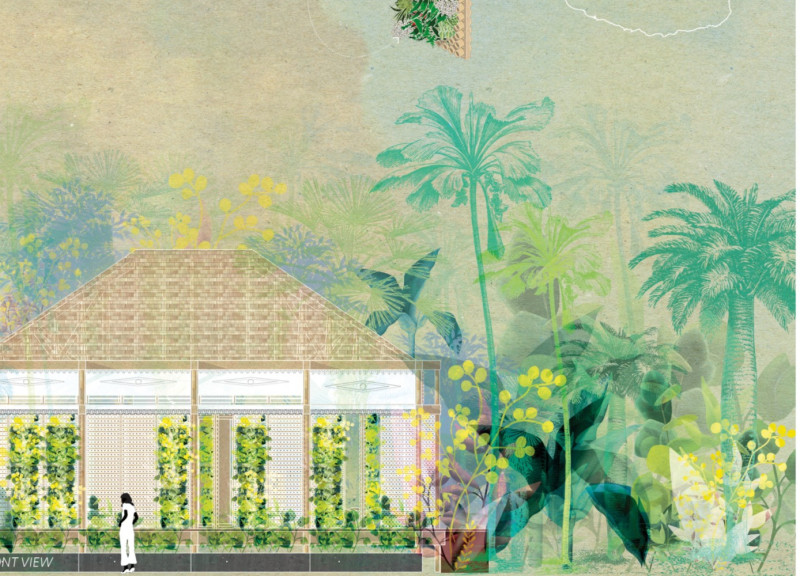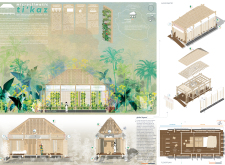5 key facts about this project
The Ti’Kaz is an architectural design project situated in Hell-Bourg, Réunion Island. This project exemplifies a contemporary interpretation of traditional Creole architecture, focusing on sustainability and ecological integrity. The Ti’Kaz functions as a residential space that promotes community living while maintaining an autonomous and self-sufficient profile. The design effectively harmonizes with the island's unique climatic conditions, employing strategies for passive heating and cooling, as well as water conservation.
Integration of Indoor and Outdoor Spaces
One of the defining aspects of the Ti’Kaz is the seamless integration of indoor and outdoor spaces. The design includes a spacious verandah that transitions between the interior living areas and the natural environment. This aspect not only enhances the aesthetic qualities of the structure but also provides functional advantages, such as improved natural ventilation and the potential for outdoor activities. The indoor areas, encompassing a kitchen, working room, and living space, are arranged to maximize flexibility, allowing occupants to modify the use of space as needed.
Sustainable Material Selection and Construction Techniques
The material choices in the Ti’Kaz are a significant factor in its unique architectural identity and ecological footprint. The predominant use of bamboo as a structural material ensures a lightweight yet strong framework while promoting rapid resource renewability. Recycled wood further enhances the project’s sustainability by minimizing waste and reducing reliance on new timber. The use of thatch for roofing serves multiple purposes, providing insulation and contributing to the overall cultural aesthetic of the building. Coupled with bio-based materials, these choices reflect a commitment to environmental stewardship while aligning with local traditions and craftsmanship.
Innovative Environmental Strategies
The Ti’Kaz incorporates a range of innovative environmental strategies aimed at enhancing its sustainability. A vertical garden system contributes to local food production and improves air quality within and around the dwelling. Passive cooling techniques, including strategically placed ventilation openings, regulate indoor temperatures, reducing reliance on mechanical systems. Rainwater harvesting systems ensure a sustainable water supply, which is crucial for a self-sufficient lifestyle. These environmental strategies not only support the functionality of the architectural design but also emphasize the project's commitment to sustainable living.
For a thorough understanding of the Ti’Kaz and its architectural implications, readers are encouraged to explore the detailed architectural plans, sections, and designs associated with this project. These resources will provide deeper insights into the innovative ideas and technical solutions implemented in the design.























